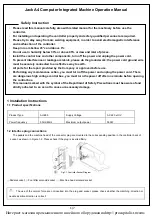
Features and procedures of the various methods
By Hand
Cutting
Features
Offers very sharp results for simple pictures and lettering.
Procedures
(When using varnished paper)
1) Coat the original with wax, and place it on top of the varnished paper.
2) Cut out the design on the varnished paper with a cutter.
3) Attach the remaining paper to the screen with an iron.
Blocking
Features
Allows for subtle nuances since the design is drawn directly on the screen.
Procedures
(When using paint and sealant)
1) Draw the design directly on the screen with paint
2) Cover the screen with sealant
3) Apply thinner to the paint
The Optical Process
Direct
Features
Since the design is burned directly onto the screen, image sharpness is
limited; it is, however a good method for printing large designs or for high-
volume printing.
Procedure
1) Prepare a film positive of the design
2) Coat the screen with developing solution
3) Attach the positive to the screen and expose it
4) Develop the image by bathing it in water
Indirect
Features
Yields a sharper image that the direct method, but the screen is not as
durable.
Procedures
1) Prepare a film positive of the design
2) Attach the positive to a developing film and expose it
3) Develop the image by bathing it in water
4) When development is complete, affix the developed film to the screen
l
Cutting
l
Blocking
l
Direct
l
Indirect




























